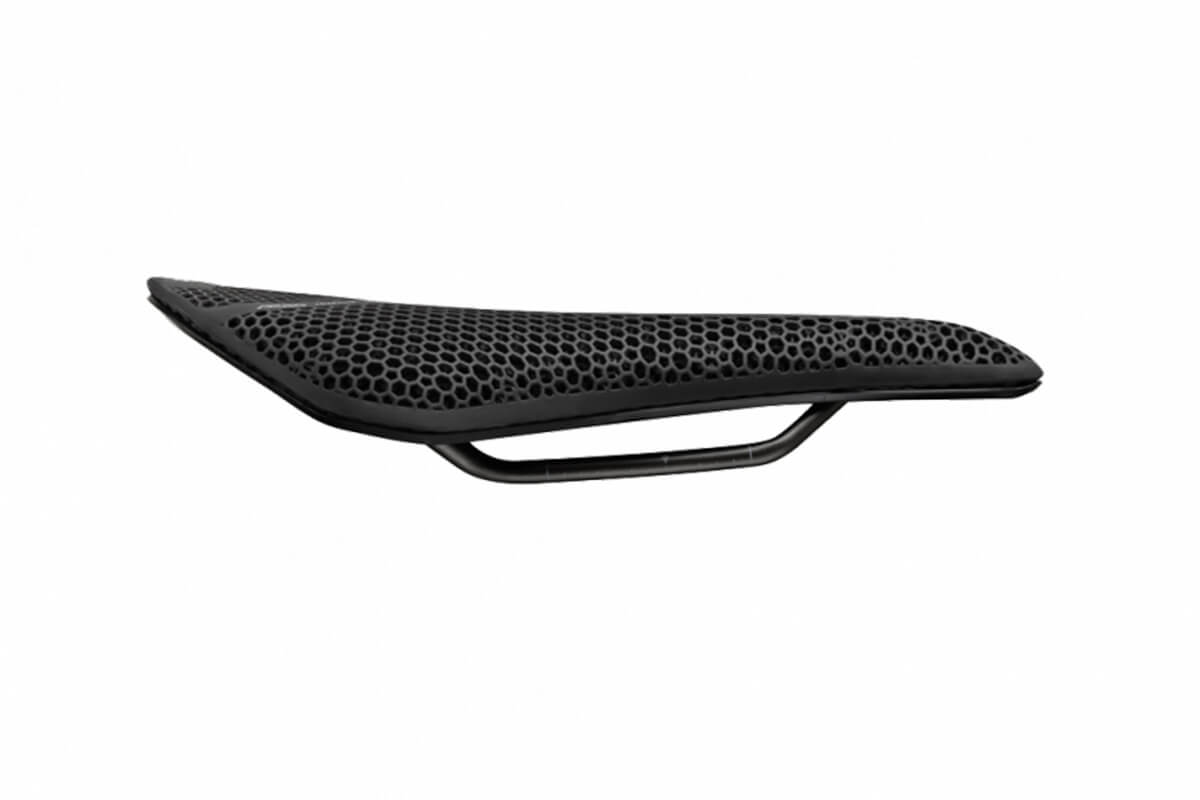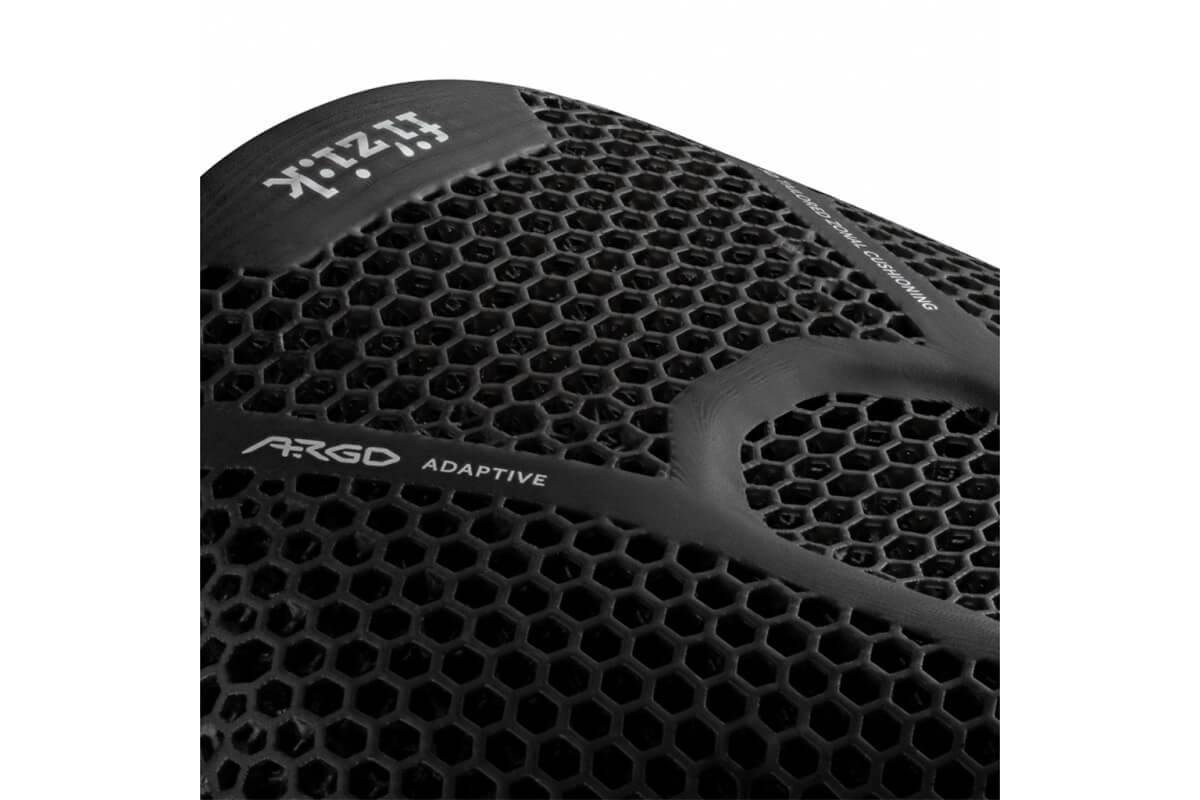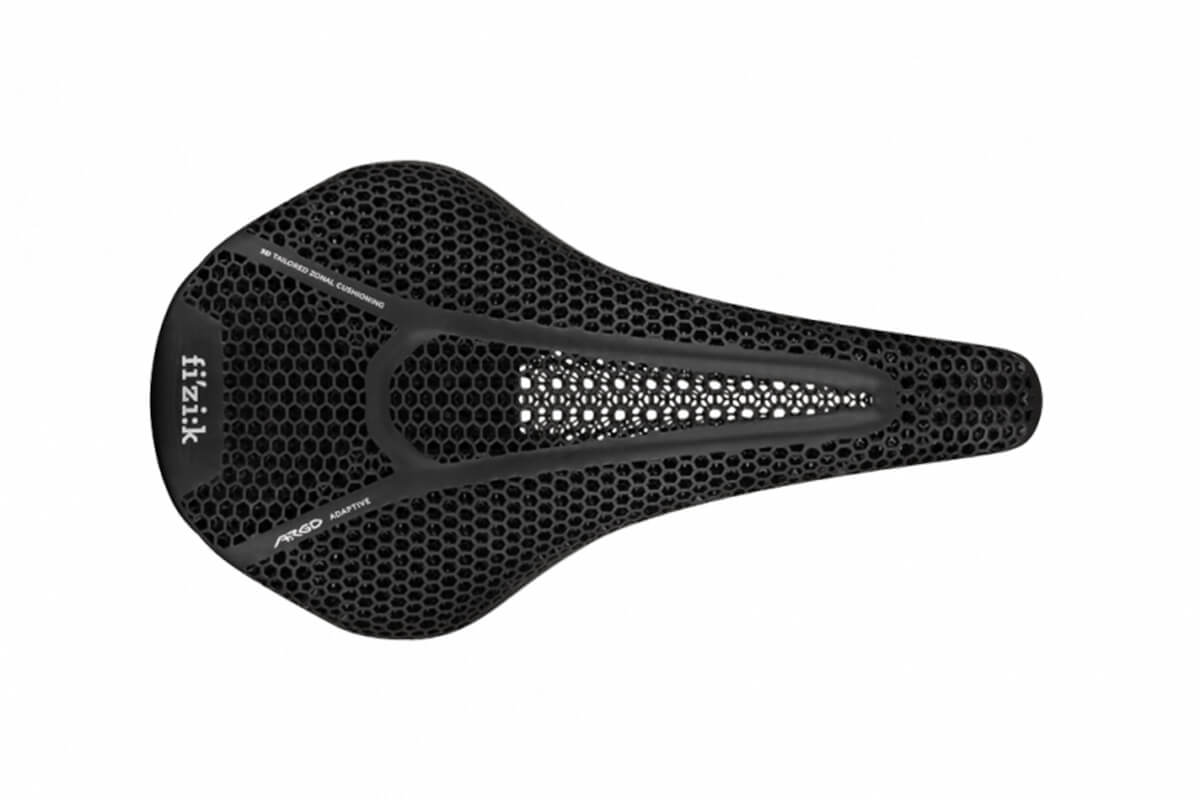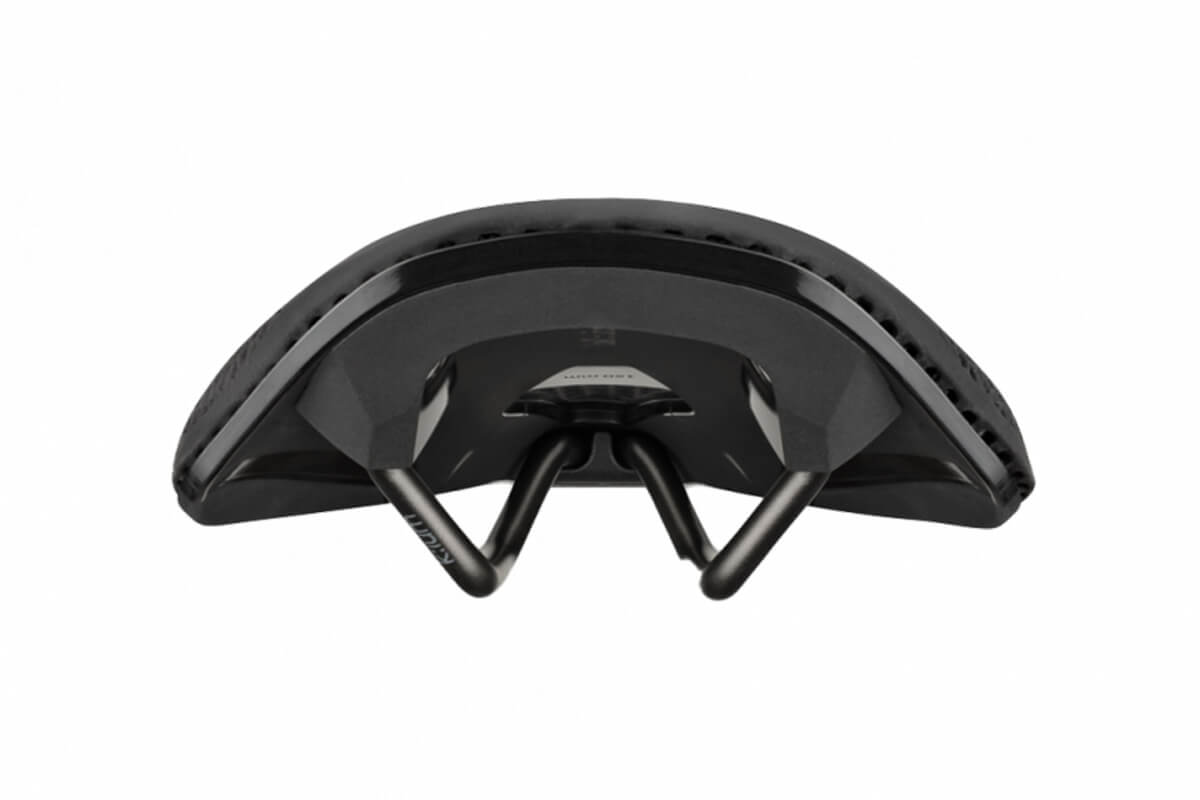The Fizik Argo Adaptive R3 saddle is a game - changer in the cycling world. It combines the cutting - edge Carbon® 3D printing technology with fi’zi:k’s long - standing expertise in saddle design. Using fi’zi:k’s vast saddle pressure mapping data and Carbon®'s advanced design, it creates a smooth and well - engineered 'zonal cushioning'. The unique 3D printed lattice structure is adjusted to handle different loading patterns across the entire saddle, resulting in a shape that suits various postures and sit bone positions. Originally developed in collaboration with bike fitting expert Phil Burt, the Argo saddle features a versatile short - nosed design. This design promotes stability, reduces pressure on soft tissues, boosts power output, and helps riders achieve a more aerodynamic position. Unlike traditional saddles that make riders shift positions often, the new Argo Adaptive keeps riders firmly in place, offering better stability, comfort, and weight distribution. Paired with Carbon®’s digital padding, the Argo Adaptive is the ideal choice for cyclists seeking long - lasting comfort, stability, and balance in a single saddle. Specifications include tailored zonal cushioning, reduced peak pressure for enduring comfort, the Argo shape for superior stability and weight distribution. The fi'zi:k Argo Adaptive R3 with K:ium alloy rails comes in 140mm (224g) and 150mm (230g) sizes.





Using the Fizik Argo Adaptive R3 saddle is straightforward. Just install it on your bike following the standard saddle installation process. Make sure it is securely attached and at a comfortable height and angle for you. When riding, you'll notice the enhanced stability and reduced pressure on your soft tissues right away. To keep your saddle in top condition, clean it regularly with a mild soap and water solution. Avoid using harsh chemicals as they may damage the 3D printed lattice structure or the padding. Also, store your bike in a dry place to prevent the saddle from getting wet for long periods, which could affect its performance. If you notice any signs of wear and tear, like loose parts or damage to the padding, it's a good idea to have it checked by a professional bike mechanic.







